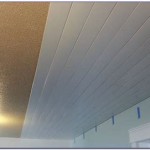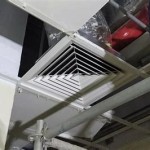Ceiling fans are a great addition to any home, providing cooling and air circulation, as well as adding a touch of style to any room. But when it comes to choosing the right fan for your home, there are a few important differences between indoor and outdoor ceiling fans that you should consider. Read on to find out more about the differences between indoor and outdoor ceiling fans.
Design
The most obvious difference between indoor and outdoor ceiling fans is the design. Indoor ceiling fans are designed with aesthetics in mind, with a variety of styles and finishes available to complement any interior decor. Outdoor ceiling fans, on the other hand, are designed for durability and withstanding the elements. They are usually constructed from corrosion-resistant materials, and the blades and motor are designed to withstand the elements. Outdoor ceiling fans are also usually designed with a damp/wet rating, meaning they are safe to use in areas where they may be exposed to moisture.
Location
The location where the fan will be installed is another important consideration. Indoor fans are designed to be installed in areas inside a home, such as bedrooms, living rooms, and other indoor areas. Outdoor fans, on the other hand, are designed to be installed in areas that are exposed to the elements, such as porch, patio, and other outdoor areas. It is important to make sure that the fan you choose is suitable for the location where it will be installed.
Features
In addition to the design and location, another important difference between indoor and outdoor ceiling fans is the features they offer. Indoor fans usually offer a variety of features such as light fixtures, remote control, and various speed settings. Outdoor fans, however, typically do not offer any additional features, as they are designed to be used mainly for air circulation and cooling. Some outdoor fans may also offer light fixtures, but these are usually designed to be used in covered outdoor areas.
Energy Efficiency
Finally, when it comes to energy efficiency, indoor and outdoor ceiling fans vary greatly. Indoor ceiling fans are typically more energy efficient than outdoor ceiling fans, as they are designed to be used in areas where they will not be exposed to the elements. Outdoor fans, on the other hand, are designed to withstand the elements and are usually not as energy efficient as indoor fans.
In conclusion, there are a few important differences between indoor and outdoor ceiling fans that you should consider when choosing the right fan for your home. Indoor fans are designed for aesthetics, and typically offer additional features such as light fixtures and remote control. Outdoor fans are designed for durability and are usually not as energy efficient as indoor fans. By keeping these differences in mind, you can ensure that you choose the right fan for your home.















Related Posts








